Opaque material refers to common materials that are neither metallic (strong reflections) nor transparent (refractive).
Plastic, wood, stone, ceramic are common examples of Opaque materials, and they are the most common type of material.
In an Opaque material most of the light is not reflected by the surface, and instead scattered by the interior in a very small, negligible, volume. This scattering is what is known as the diffuse color, or simply the color of the material, and is the prominent visible feature of such materials.
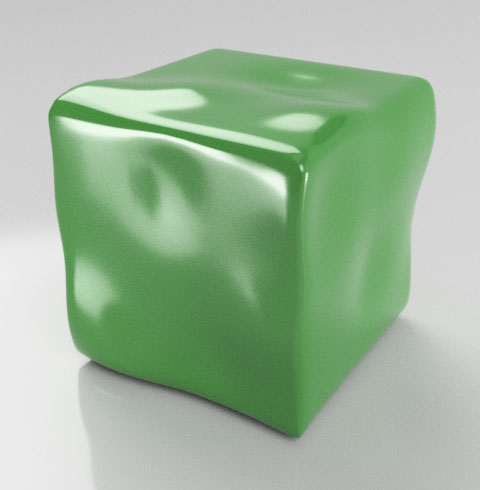 Plastic |
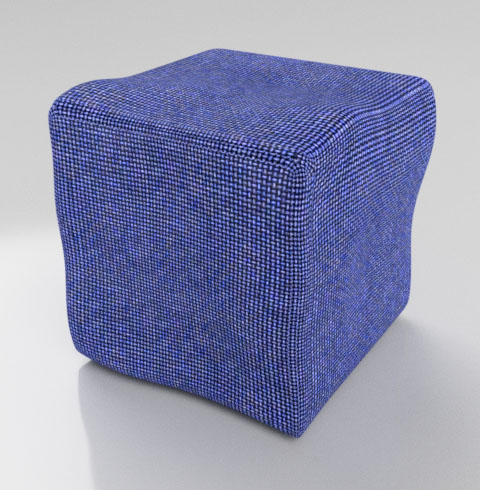 Fabric |
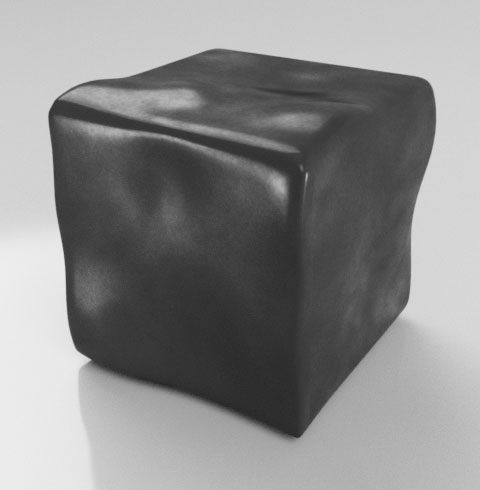 Rubber |
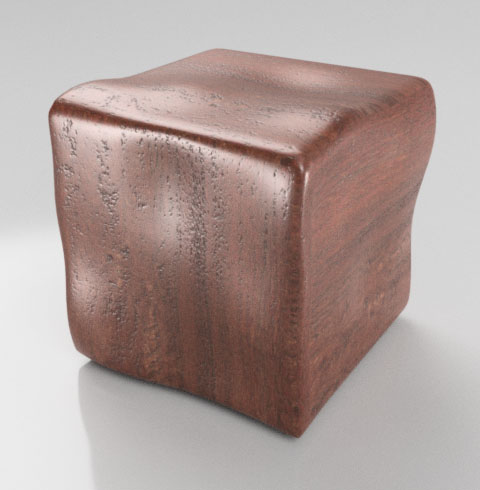 Wood |

A small amount of light is also absorbed.
A type of the Opaque class materials are materials with a broader scattering. These materials are known as translucent, and the light scattering is wide enough that it softens surface details or even emerges from the other side of objects if they are not too thick.
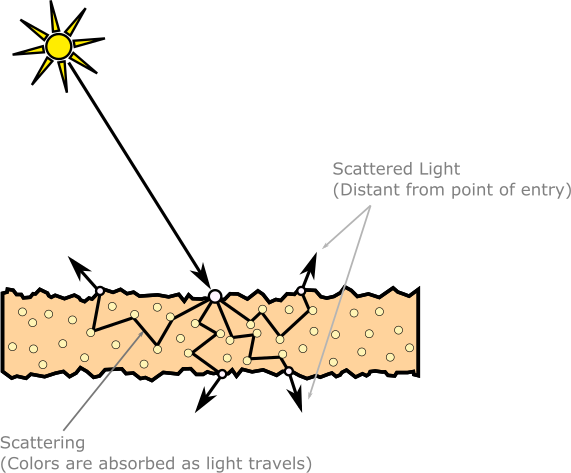
Translucency, also known as Sub-Surface Scattering (SSS), does not make an object transparent. The scattering is very strong and random and makes it impossible to see anything through the material even if very thin.
The Sub Surface Scattering effect is added on top of the normal Opaque material look.
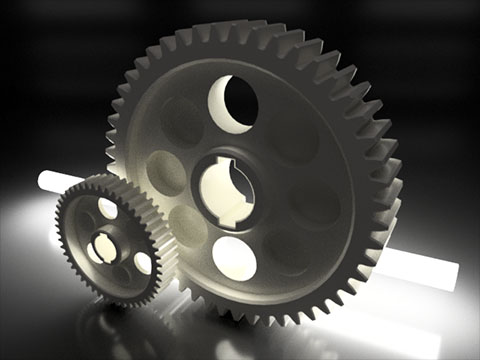 Nylon with no SSS |
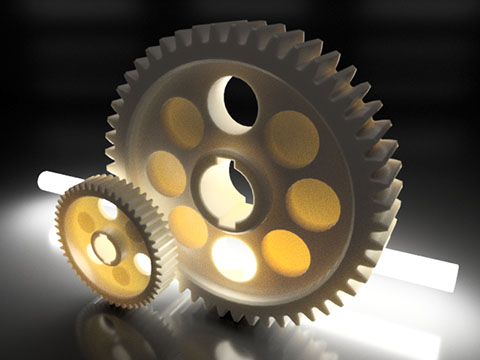 Nylon with SSS |
Opaque materials can also be emissive, meaning that they actually emit light. In the real world the material would not actually emit light.
Due to their translucency properties, these materials are often used to hide and diffuse a strong light source behind them. Typical applications are lighted advertising signs or frosted light bulbs.
But to improve rendering performance, it’s easier to ignore the light behind and instead make the translucent surfaces emit light themselves.
Material Specific Parameters
- Color
- The scatter component of the reflected light. This is commonly referred as the color of the surface of an opaque material.
- Reflectance
- The amount of light reflected by the surface. Opaque materials are also known as Dielectric. On average they reflect 3 to 6 percent of the light at the normal angle (perpendicular to the surface). The range of this parameter goes a bit below and above of this range to allow for some artistic tweaking.
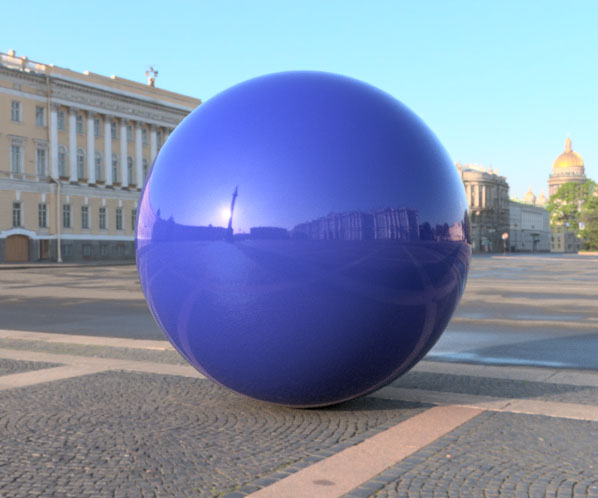
A normal plastic
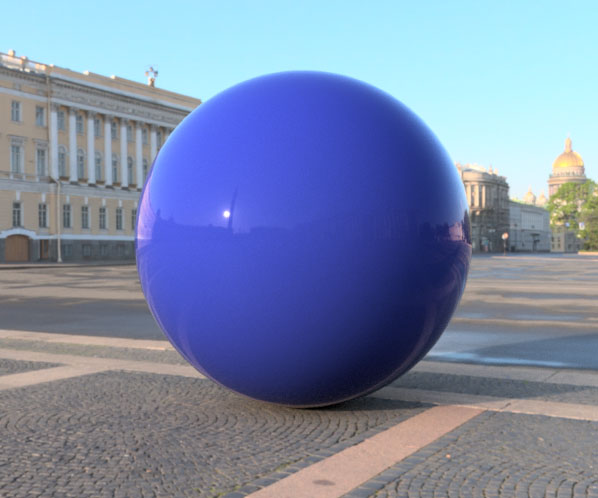
Reduced Reflectance at normal angle. Edges remains unaffected.
See the Advanced Highlight Control parameters to control reflectance and for non-physically accurate options.
Translucency Specific Parameters
- Depth and Weight
- While Weight looks like a color, in reality it’s a multiplier to the Depth value. With the combination of these two parameters, we obtain the more technical value for the Mean Free Path (MFP), which is a measurement of how far light travels between scattering events.
- If blue light MFP is shorter than the red and green, then over distance, blue will get absorbed and red and green will instead keep traveling.
- The effect is that after scattering for a while and being absorbed at different distances, the light finding its way back out of the material and contributing to the SSS effect is colored in a similar way as the Weight parameter.
- Textures can be used for the Weight Parameter but as they apply only to the surface, they will not change the inside scattering, resulting in a physically incorrect result. Gradients and smooth color changing texture can provide believable results.
-

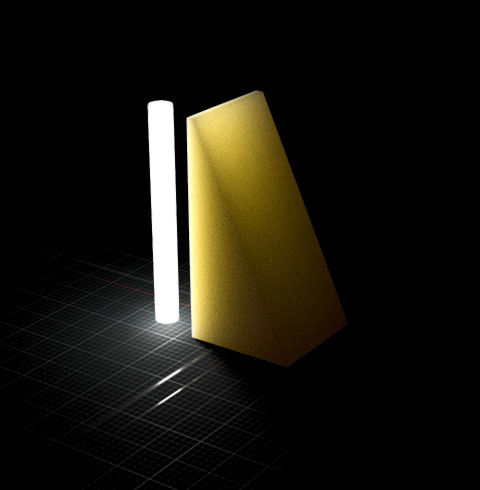
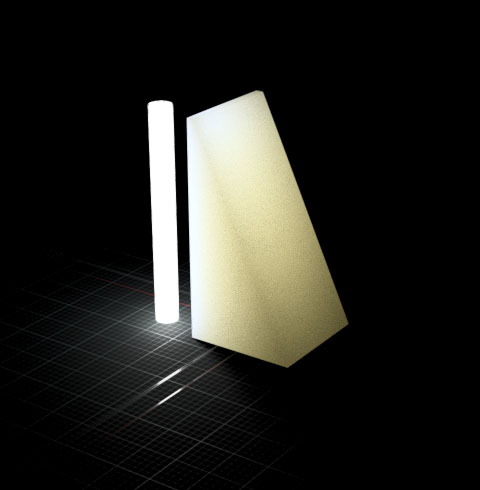
Translucency with different Depth values and same Weight
Emissivity Specific Parameters
- Luminance
- The amount of light emitted per unit of surface, or radiance (luminance). In this case, the unit is Candelas per Square Meter (also known as Nits). This total amount of light emitted by the material depends on the surface area of the object it’s applied to. A smaller object will emit less light than a larger one
- Some examples of average luminance values:
Source Average Nits (cd/m2) LCD Computer Monitor/Television
200-500
Frosted 800 lm light bulb
22500
Frosted 1500 lm light bulb
47850
- A few samples of emissive objects:
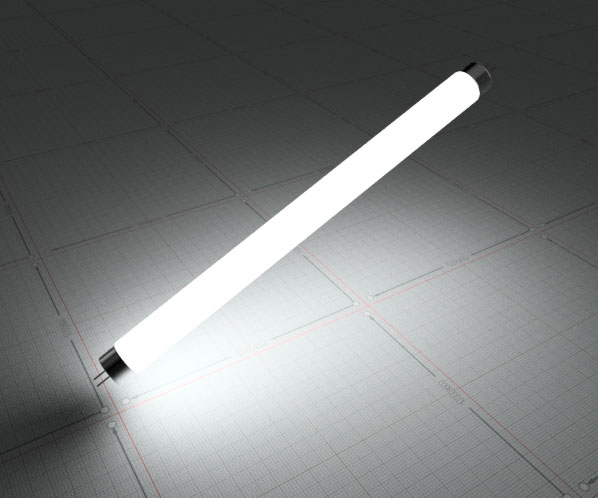
Neon tube
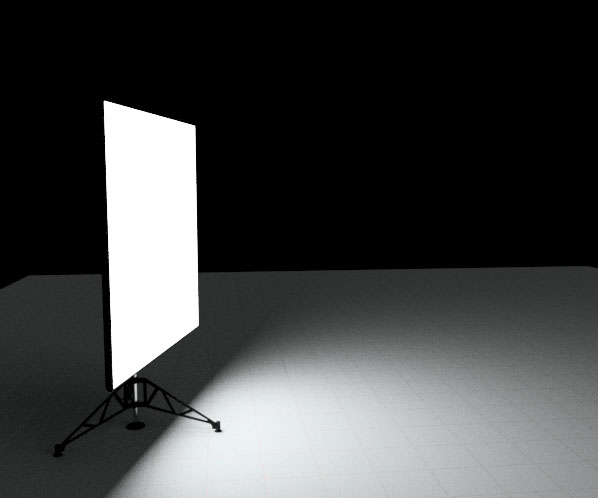
Studio Light

Hidden shaped emitter
- Filter Color
- The Luminance is the white light measurement. The filter color multiplies that light (like an actual colored filter applied in front of a studio light) to create colored light emitters. Using textures, the color of the light can be controlled by an image, useful if what you are modeling is, for example, a lighted advertising billboard.
-
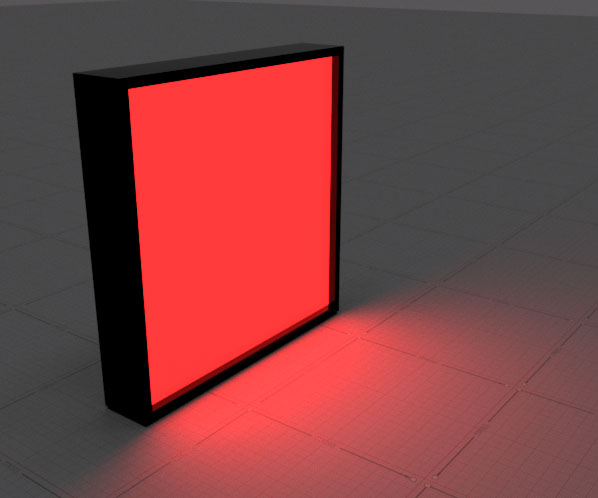
Solid Filter Color

Textured Filter Color